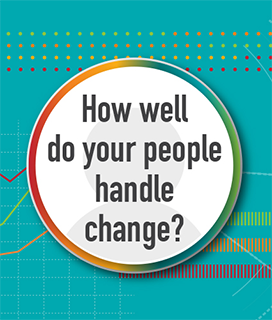A roundtable of CEO’s from nearly 200 companies recently issued a statement regarding the purpose of corporations. One important purpose was “Investing in our employees.”
This can take many forms—from compensation, to learning opportunities, to supporting employee well-being. Employers are increasingly focused on involving employees in decisions around which kinds of support and programs will provide the most benefit.
But, listening to the voice of employees isn’t always as easy as it seems. Organizations go to great lengths to provide proper support by seeking input through methods including surveys and task groups. However, many continue to find it difficult to understand and meet employees’ real needs.
Experience management company Qualtrics reports that only 30% of employees feel that their organization responds to employee feedback.
Not only is it difficult to collect clear feedback on straightforward issues like job satisfaction and cafeteria food, HR faces the more difficult problem of trying to uncover needs in sensitive areas of employee well-being such as mental health.
Recently Starbucks committed to listening carefully to the needs expressed by their employees, who they call partners, and to enhancing their support for mental health. CEO Kevin Johnson told CNN Business:
The more thoughtful we are about creating a range of benefits that matter to our partners—that helps us attract new partners. Over this past year, one of the things that partners have highlighted is the need for increased focus on mental health.
Starbucks is not alone. Many organizational leaders have identified mental health as a top priority.
At a recent set of focus groups with senior HR leaders, I asked where they get data to understand mental health needs in their workforces. They told me they don’t have data. “It’s hidden.”
“We identify issues when they hit claims,” said one senior leader. But organizations need to widen the focus from acute cases to include early identification and support for struggling employees.
One of the goals of an important new American Heart Association (AHA) CEO Roundtable initiative to improve mental health is to “Collect and analyze a variety of data to identify strengths and opportunities to continually improve the mental health and well-being of employees.”
Employees are hesitant to divulge their needs in the area of mental and behavioral health, and even trickier, they may not have good awareness themselves. Given that we hope to catch mental health issues upstream of acute events, we need to be able to identify risks of which employees themselves may not be cognizant. That isn’t to say we should engage in some advanced clinical diagnosis, but rather that we should understand their struggles before they devolve into anxiety, depression, or worse.
Despite all this perceived difficulty in assessing the need, from the standpoint of psychology and neuroscience, we do know how to identify risk, how to support mental well-being, and how to train healthy cognition so that people are better able to manage stress and emotions. In fact, we even know how to identify mental health risk in a population early on.
The AHA acknowledged this potential. “The growing number of digital interventions offered by third party vendors and insurance carriers to employees are promising ways to tailor programs for different populations based on their risk for mental health disorders.”
We need to think broadly about how we listen to employees. Direct feedback is essential, but there are subtler ways of listening—ways of identifying difficulties early on, before issues show up on their faces or in their voices.
Today, we have the capability to answer important questions like:
- What level of risk for mental health issues exists in an employee population?
- Do employees know how to manage their emotions?
- Are they aware of mistakes in their thinking?
- Do they know how to manage their minds and shift out of stress responses into productive thinking?
By addressing the absolute fundamentals of health, we’re able to support mental and physical health profoundly, before problems arise.
It’s wonderful to see the momentum increasing due to action by the Business Roundtable, the AHA, and employers like Starbucks. Now we need to bridge the gap between the search for solutions and the already available data and programming that addresses problems even before they arise.
Learn about meQuilibrium and the impact of resilience on employee mental health and well-being. Watch our short video below that introduces members of the meQ program to the concept of resilience.

